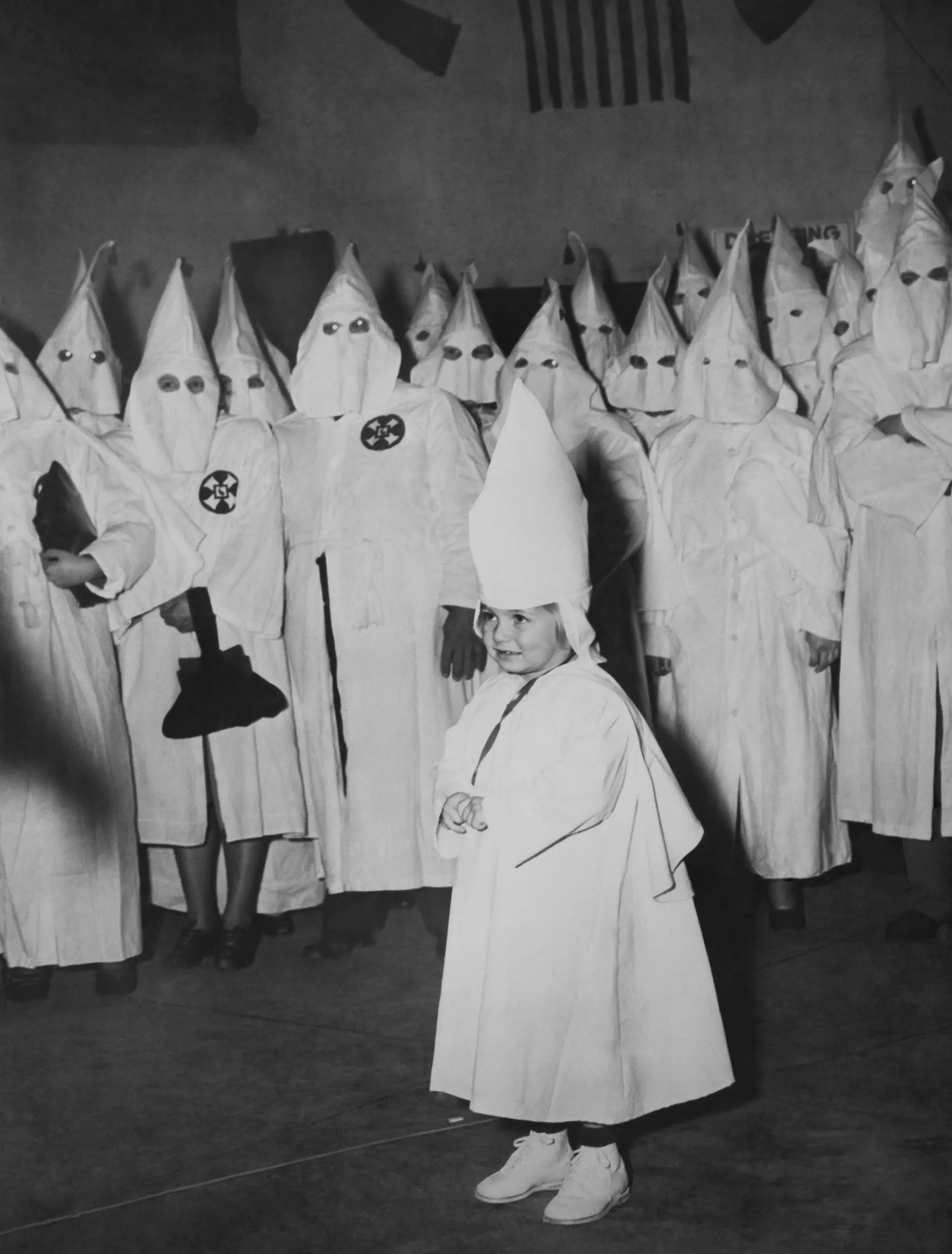'Ku Klux Kiddies': The KKK's Youth Movement
- dthholland
- Jan 10, 2021
- 4 min read
Updated: Jan 21
On a summer day in 1924, a crowd gathered for what, at first glance, seemed like an ordinary mass baptism. Parents stood proudly with their children, ready to take part in the kind of ceremony that often marked a milestone in religious communities. But this was no regular Sunday service. As the families approached the clergyman, a group of 50 men in white robes stepped forward, their faces obscured by hoods, leaving no question about who they were or what this event truly represented.

The children being baptised that day weren’t just joining a church—they were being initiated into the world of the Ku Klux Klan. Alongside the traditional vows of faith, their parents pledged to raise them in line with the Klan’s ideals, which were anything but pure. Wrapped in the guise of patriotism and “Americanism,” these promises were a commitment to a lifetime of segregation, bigotry, and upholding white Protestant supremacy. To outsiders, it might have seemed like a patriotic gathering. To the Klan, it was a ceremony designed to pass the torch of hate to a new generation.

The KKK's Reach into Family Life
By the 1920s, the Klan had shifted from its origins as a post-Civil War vigilante group to a nationwide organisation with millions of members. It wasn’t just a shadowy fraternity for men anymore; women and children were recruited into its ranks, making the Klan a family affair. Entire households took part in its parades, picnics, and rallies. Auxiliary groups sprang up for every age: teenage boys joined the Junior Ku Klux Klan, girls were part of the Tri-K-Klub, and younger children were affectionately labelled “Ku Klux Kiddies.” Even infants weren’t left out, with many enrolled in “cradle rolls,” a formal way for parents to dedicate their children to the Klan from birth.
The Klan understood that to sustain its ideology, it needed to indoctrinate not just individuals but entire families. After all, who better to spread its message than parents teaching their children to see the world through the Klan’s warped lens?
Women’s Key Role in Expanding the Klan
Much of this family-oriented strategy was driven by the Klan’s female members. In the 1920s, women were stepping into public life in new ways, buoyed by the recent passage of the 19th Amendment. The Klan capitalised on this momentum, forming the Women of the Ku Klux Klan (WKKK) in 1923. Within months, the WKKK boasted 250,000 members, making it one of the largest women’s organisations of its time.

Women weren’t just passive supporters—they were organisers, fundraisers, and recruiters. They saw themselves as protectors of “white womanhood,” a key theme in Klan propaganda, and worked to create a society where white Protestant values reigned supreme. They also played a critical role in introducing children to the Klan, organising events that blurred the lines between family fun and indoctrination.
The Junior Klan and Tri-K-Klub
For boys, the Junior Ku Klux Klan offered a way to emulate their fathers. Launched in 1923, this group was essentially a scaled-down version of the adult Klan. Boys held their own meetings, participated in parades, and even lit their own burning symbols, like a fiery “J” next to a cross. By 1924, the Junior Klan was active in 15 states and growing fast.
Girls had their own organisation, the Tri-K-Klub, which focused on traditional gender roles and Klan-approved values. Members learned pledge songs, helped their mothers with Klan activities, and often appeared in parades as symbols of “100 Percent American” purity. Their involvement reinforced the idea that white girls had a duty to avoid contact with anyone who wasn’t white, Protestant, or Klan-approved—a passive yet powerful way of maintaining the Klan’s social boundaries.
Childhood in the Klan
Even younger children weren’t spared from the Klan’s influence. Known as “Ku Klux Kiddies,” they took part in events that seemed, on the surface, like typical childhood activities. They marched in parades, attended picnics, and went to summer camps. But these gatherings were far from innocent. The Klan’s picnics and camps promised wholesome fun but were steeped in messages of exclusion and supremacy. A 1924 ad for the “Kool Koast Kamp” in Texas, for example, promised a family-friendly environment “guarded carefully” by both Klan members and sympathetic law enforcement officers.

Mass baptisms were another way to formally bring children into the fold. Parents dedicated their infants to the Klan’s cause, symbolising their intention to raise them within the organisation’s hateful framework. Parades often featured children prominently, like one in Indiana where young marchers dressed in miniature Klan robes and proudly carried a banner proclaiming themselves “Ku Klux Kiddies.”
From Cradle to Grave
The Klan’s influence extended beyond childhood. For those committed to its cause, life milestones were marked with Klan rituals. Weddings featured robed participants, funerals included flower arrangements spelling out “KKK,” and even plans for “Klan Kolleges” were floated in the 1920s, though these institutions never materialised. The message was clear: a life dedicated to white supremacy was one to be celebrated, from birth to death.
A Legacy of Hate
The second wave of the Klan began to unravel by the end of the 1920s, thanks to scandals, economic challenges brought on by the Great Depression, and the rise of a modern society less interested in fraternal organisations. Yet the damage had been done. The Klan’s efforts to involve women and children helped normalise its ideology, embedding it into communities across the United States.
Today, the Klan’s family-focused strategies serve as a reminder of how hate can be disguised as tradition, patriotism, and even family values. It’s a stark lesson in how easily destructive ideas can take root when they’re passed down as part of a way of life. For the children of the Klan, those early lessons were not just part of growing up—they were a foundation for perpetuating hate in the name of heritage.
























































